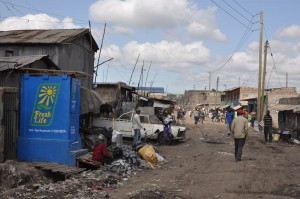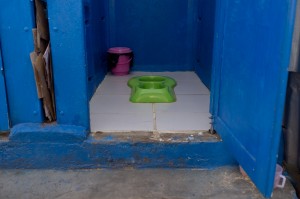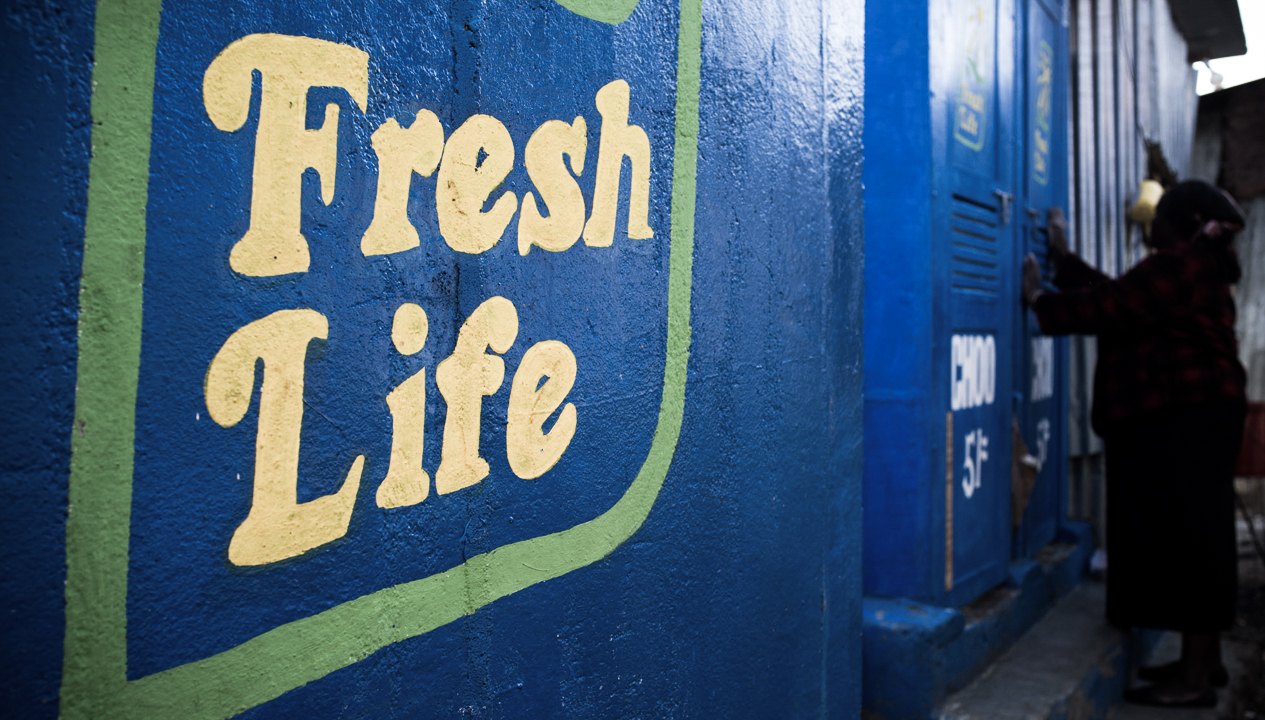Nathan Cooke (Product Design ’08) is an idealist who uses design to work with others and create a tangible effect on people’s lives. Nathan is the Co-Founder and Product Developer for Sanergy, a start-up in Nairobi, Kenya providing sanitation in the slums. Sanergy recently received a Flextronics Economic Development Award from The Tech Museum of Innovation.
Commitment to Uncomfortable Change
The world currently suffers from a sanitation crisis in which 2.5 billion people lack access to clean, affordable & adequate sanitation. In the informal settlements Nairobi, Kenya, this translates to over a million people who don’t have access to a basic human right. Sanergy is taking a systems based approach to this challenge, by capturing waste and turning it into valuable by products. It starts with the construction of a dense network of our Fresh Life Toilets, which are franchised to local entrepreneurs who run them as a business. We provide them with key services like business analytics, networking support and discounted products. Sanergy then collects that waste, and takes it to a central processing site where it can be converted to high value by-products such as fertilizer, which is sold to local farmers.
 This approach offers a number of solutions not addressed by existing options. Pit latrines, which afford people a place to relieve themselves, are not always clean. They are emptied by hand, using buckets to remove the waste, which is then illegally dumped in the community, putting both the workers and communities health at risk in the process. Abolition blocks require large sections of land, a rarity in the informal settlement, are expensive at 30,000USD each; and suffer from lack of individual ownership, which can lead to unclean and non-functional units. They are also far from people’s homes, putting them at risk of assault if they want to go to the bathroom at night. Lastly, open defecation and flying toilets are an undignified option that results in human waste in public area that put the communities health at risk. Building a toilet, and having a way to remove and process the waste tackles the full challenge.
This approach offers a number of solutions not addressed by existing options. Pit latrines, which afford people a place to relieve themselves, are not always clean. They are emptied by hand, using buckets to remove the waste, which is then illegally dumped in the community, putting both the workers and communities health at risk in the process. Abolition blocks require large sections of land, a rarity in the informal settlement, are expensive at 30,000USD each; and suffer from lack of individual ownership, which can lead to unclean and non-functional units. They are also far from people’s homes, putting them at risk of assault if they want to go to the bathroom at night. Lastly, open defecation and flying toilets are an undignified option that results in human waste in public area that put the communities health at risk. Building a toilet, and having a way to remove and process the waste tackles the full challenge.
Our Fresh Life Toilet, manufactured by us in Nairobi, is made of prefabricated concrete which can be assembled onsite after a Fresh Life Operator, or FLO (the franchisee), has purchased one for 50,000 shillings (~550USD). A Fresh Life Operator can pay upfront or with a loan from Kiva, and then charges people per use at markets rates. It’s small three by five foot footprint was made to fit in as many spaces as possible. It only requires digging two feet into the ground to place the two containers we use to capture the feces and urine. The urine diverting squat plate sits on top of a tiled floor which is both aspirational and easy to clean.
 To date, Sanergy has constructed over 500 Fresh Life Toilets, for over 200 FLOs. This network has over 25,000 uses a day, and removed over 3,000 metric tons of waste from the community. By the end of 2015, we will have 1,000 toilets, with will make us cash positive through fertilizer sales.
To date, Sanergy has constructed over 500 Fresh Life Toilets, for over 200 FLOs. This network has over 25,000 uses a day, and removed over 3,000 metric tons of waste from the community. By the end of 2015, we will have 1,000 toilets, with will make us cash positive through fertilizer sales.
To understand what these numbers mean on a personal level, you have to watch this video on the Agnes’ journey as a Fresh Life Operator. Here is a woman who used to sell changa’a (illegal home-brew alcohol) and pay bribes to police officers. Since purchasing an FLT, she has been able to turn her own life around and improve the lives of her family and those in her community.
If stories like Agnes’ inspire you to want to work in the social impact space, I’m glad. There is so much work to be done. Like me, you are immensely privileged to be able to choose a career that you’re passionate about. However, working in the social impact space is hard, grueling work that takes patience and commitment with long stretches of time where there’s little indication of progress.
There are many well meaning designers who may set aside two or three weeks at a time to work for non-profits and social enterprises around the world, but it is simply not enough. To have the greatest impact, designers need to be a part of the organization’s journey by committing to the role fully – not just as consultants. The best solutions come when we fully understand the context, breadth and depth of the problem (structural problems rarely have an easy explanation).
 It is not glamorous work. I’ve been with Sanergy since it’s inception, over four years ago, as a designer and as a person, it’s been a challenging, uncomfortable journey. From missing home, to experiencing profound, ethical discomfort around matters of equity, to fighting for design thinking as a central value in operations… It has been no walk in the park. I’ve come to realize how important design is in creating holistic solutions that empower communities, and how much we need the expertise of designers in propelling organizations further to think differently in order to have the greatest impact for those less privileged. We need designers out here, in the trenches — committed designers who are unafraid of complexity and being uncomfortable.
It is not glamorous work. I’ve been with Sanergy since it’s inception, over four years ago, as a designer and as a person, it’s been a challenging, uncomfortable journey. From missing home, to experiencing profound, ethical discomfort around matters of equity, to fighting for design thinking as a central value in operations… It has been no walk in the park. I’ve come to realize how important design is in creating holistic solutions that empower communities, and how much we need the expertise of designers in propelling organizations further to think differently in order to have the greatest impact for those less privileged. We need designers out here, in the trenches — committed designers who are unafraid of complexity and being uncomfortable.
I welcome anyone who is interested to learn more about this field or Sanergy’s work to contact me at nathan@saner.gy or connect with me on twitter @chefcooke.
